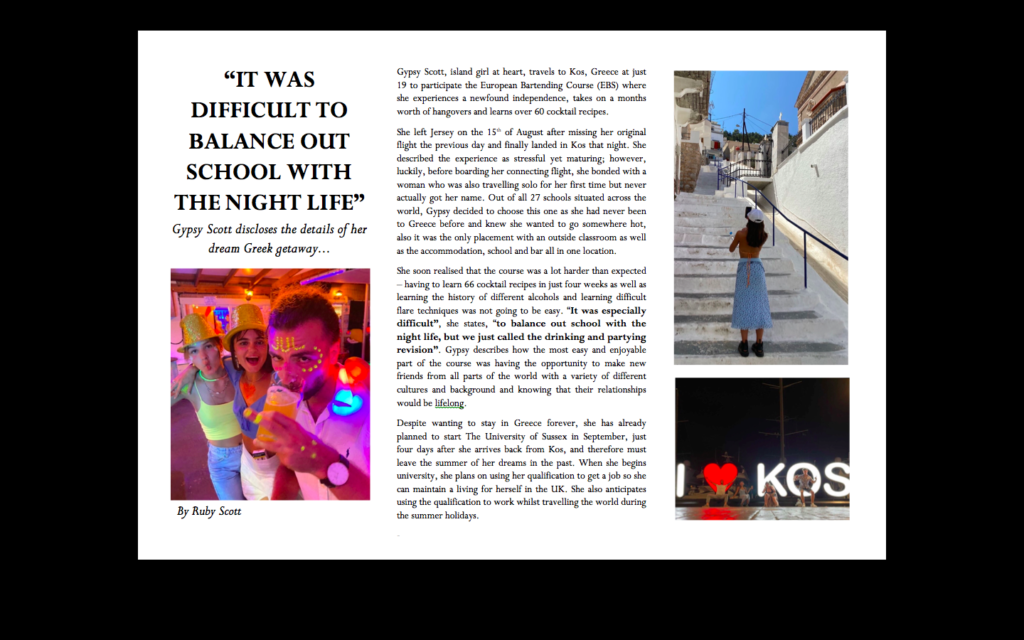
In my summer task, my intention was to recreate an article from a travel magazine. I did this by interviewing someone who was a less experienced traveller in order to capture the reality of travelling and that whilst it is very stressful, anyone is capable enough to get through it.
The language I used to distinguish my work from any other media form was heavily influenced by the ‘pyramid writing structure’; I began with a ‘lead’ where I quoted the most interesting part of the interview, next I wrote the ‘nut graph’ where I summarised who the interview was about and what I would be interviewing her etc., I then finished with the body where I described the interviewees trip in detail. I added
My article challenges the traditional teenage stereotype as, despite the common cliche that teenagers are incapable and constrained, my interviewee, at just 19, was able to travel alone and provided for herself for an entire month.
For my product, I anticipated that a mainstream travel magazine, such as the Sunday Times Travel Magazine, would publish my article as I was aiming for a more middle-upper class audience as the place in which I was talking about, Kos, Greece, doesn’t tend to be an extremely expensive place to accommodate yourself.
I am very happy with my finished product and although I love the simplicity of the layout, since starting the course I have become more familiar with photoshop and could therefore use it to improve my work by making it more visually exciting. I could use it to create a more colourful and lively or to arrange the text into a more abstract manner for example by warping it.









